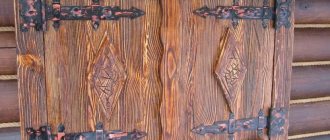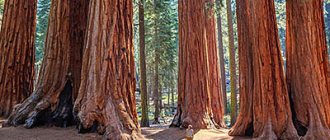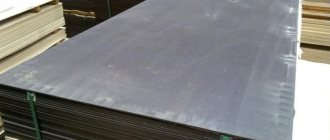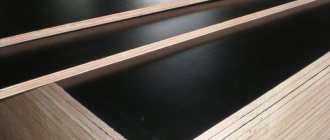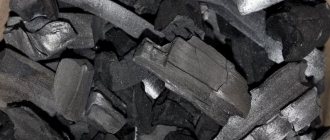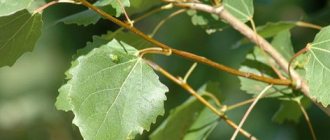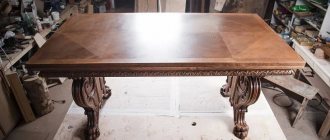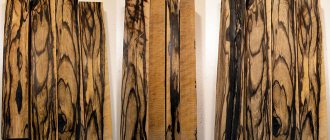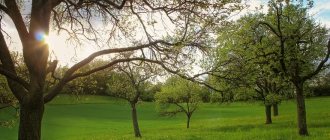This ornamental plant is one of the most ancient on our planet. Boxwood, a member of the Boxwood family, is known for its slow growth. There are about 100 species of boxwood growing on the planet. It is widespread in the Mediterranean, East Asia and the West Indies. The ancient Greeks called it "buxus". It can be in the form of a bush or tree. In the southern regions, boxwood grows in the open air, and in the northern regions it is successfully grown in apartments in pots. Boxwood is highly respected by landscape designers for its evergreen foliage and ability to tolerate pruning, with which the bush can be given any desired shape.
Description and properties
Boxwood leaves are about 0.5-4 cm in size and have an oblong or round shape. They are dense and leathery, glossy and darker greenish on the outside, and matte and paler on the inside.
The flowers are small, unisexual, yellowish in color, fragrant, arranged in small inflorescences. At the end of flowering, fruits are formed, which are three-lobed boxes, which crack upon final ripening, and dark glossy seeds spill out of them.
Boxwood belongs to the honey plant. But honey is poisonous, like all parts of this plant, and should absolutely not be eaten.
All types of boxwood contain poisonous alkaloids and phytoncides. All parts of the plant contain poisons and should not be given to children or animals.
Over the course of a year, boxwood shoots add only about 5 cm in height. The bush itself can live for about 500 years. The boxwood tree is popularly called iron. It has the strongest wood.
Boxwood wood has no center, has a smooth structure and a pale yellow color. When dried, the wood acquires an amber tint; its surface does not change color over time.
The density of boxwood exceeds the density of oak and hornbeam, so its wood sinks to the bottom in water. Rare and highly valuable boxwood wood is successfully used to create expensive souvenirs, smoking pipes, chess pieces, figurines, musical and medical instruments.
Another type of ironwood
The Khosta yew-boxwood grove was declared a reserve in 1930 in order to preserve, study and restore such rare tree species as yew and boxwood. In 1936, an excursion route was laid here, the so-called boxwood ring, with a length of 1600 m.
Colchian boxwood (Buxus colchica) growing in the grove was identified as an independent species in 1947 by A.I. Poyarkova. Its range covers Western and Eastern Transcaucasia. In Eastern Transcaucasia, the plant is found in the Zagatala region of Azerbaijan. Outside our country, Colchian boxwood grows in Asia Minor.
Interesting read: Where is moisture-resistant plywood used?
In the dense thickets of boxwood, twilight always reigns. Light green moss covers its trunks and hangs from the branches in long, intricate tufts. Boxwood belongs to the relics of the Tertiary period. Scientists believe that boxwood forests have survived unchanged to this day for 30 million years. Like many other ancient plants, Colchian boxwood was highly respected by people. Among many peoples of Western and Eastern Transcaucasia, it was considered a sacred tree.
Colchian boxwood belongs to a small group of evergreen deciduous tree species in our country. Its highly branched crown is densely covered with small dark green shiny leathery leaves. Their appearance reflects two characteristics of the plant. Firstly, this is one of the most shade-tolerant trees.
Boxwood can be found under the canopy of broad-leaved trees: maple, linden, elm, beech - or in shady mountain gorges. Successful growth of boxwood is possible with one hundredth of full sunlight. This does not mean that it cannot be grown outdoors. In southern cities it successfully develops without any shading. In nature, boxwood is confined to shady places due to the fact that very few plant species can survive in such conditions.
Boxwood has mastered this ecological niche due to the high content of chlorophyll in its leaves, which gives them a dark green color. Here boxwood does not face competition from other trees and shrubs.
Secondly, boxwood is a moisture-loving species. Moss, which covers the trunks and branches with a thick coat, helps retain moisture in the summer and protects the plant from frost in the winter. The small size of the leaves and the dense cuticle covering them limits water loss through transpiration.
Good to know: how to choose a chisel for wood.
Alkaloids, coumarins, flavonoids, saponins and tannins were found in boxwood leaves. Its alkaloids are steroidal in nature and therefore have the potential to be biologically active substances.
This is indicated, in particular, by the use of boxwood bark and leaves in traditional medicine as a laxative and diaphoretic. The presence of physiologically active substances in the plant and its use in folk medicine give hope that someday boxwood may become a source of medicines.
Boxwood parquet.
In this regard, it is interesting to note that the All-Union Museum of Longevity is being created in Abkhazia. One of the exhibits of this museum will be a cradle covered with dry boxwood leaves. According to legend, they give the child health and prolong life. In the meantime, boxwood cannot be used for self-medication because it is a poisonous plant. Its branches are toxic to livestock, especially camels. Eating leaves and bark causes vomiting and stomach upsets in animals. Workers engaged in cutting boxwood often develop allergic diseases. Boxwood grows mainly on calcareous soils. This can be easily noticed in the Khosta yew-boxwood grove. Here its trees often grow directly on wet limestone rocks, covered with a barely noticeable layer of soil.
READ Features of silver birches
In places where it is found (on the steep slopes of gorges), boxwood plays an important water-protective and soil-protective role. This is another reason to protect its natural plantings in every possible way. In March, small fragrant flowers appear on the boxwood, attracting a large number of bees. The famous expert on honey plants M. M. Glukhov wrote that bees visit boxwood flowers to collect pollen. They produce boxwood honey from the sugary juice secreted by fruits that are finishing their development (still fresh and green). Locals call it “creaky”. After standing for some time in a cool place, it acquires a solid consistency, for which it is called stone.
Untreated boxwood.
After flowering, fruits form on the plant - spherical tricuspid boxes containing shiny black seeds. They ripen in July, at which time the fruits crack and scatter seeds at a distance of up to 3 m. Abundant fruiting is observed in boxwood not every year, but approximately once every three years. The seeds have good germination capacity, but quickly lose it.
Boxwood, like yew, is a very slow-growing species. Its annual increase in thickness does not exceed 1 mm. For this reason, the annual rings of the trunk are very thin, and the boundary between them is poorly defined. It is not surprising that at the age of 100 years the trunk diameter is only 6–7 cm, and its height is small – 4–5 m. On deep carbonate soils, the growth rate of boxwood increases. Here it can reach a height of 18 m with a maximum trunk diameter at the root collar of about 0.5 m. The life expectancy of boxwood is less than that of yew, it is 400 - 500 years.
Despite the inconspicuousness of the flowers, boxwood is valued as an ornamental plant due to its leaves, which remain on the plant even in winter. Even in ancient times, evergreen boxwood began to be used for landscaping populated areas. Gardeners highly appreciated the ability of this breed to successfully withstand shearing, to retain the shape given by man for a long time (cube, ball, cone, animal-like) due to its slow growth. In the gardens of Ancient Rome one could see the most bizarre forms created from boxwood by human imagination.
Boxwood still enjoys well-deserved success among landscapers. Exceptional shade tolerance, undemanding soil conditions provided there is sufficient calcium carbonate content in it, and resistance to environmental pollution allow it to be used even for landscaping the territories of industrial enterprises, residential and industrial premises. In open ground, boxwood is cultivated as an ornamental plant in our country from the Black Sea coast of the Caucasus and Crimea to Kyiv, Poltava and Kharkov.
It is considered the best plant for borders and topiary, used in single and group plantings on lawns, edges and in the undergrowth. In winter, the greenery of boxwood enlivens squares and parks. In a mature state, it quite successfully tolerates cold winters with frosts down to minus 30 ° C. At a young age, it often freezes slightly, but then grows back. Gardeners have created plants that differ in color, leaf shape, and habit. The weeping forms of boxwood are impressive. Along with evergreen boxwood, Colchis can also be used for these purposes. It also tolerates shearing and pruning successfully and is an excellent material for hedges and borders.
Product made from boxwood.
Boxwood is famous not only for its beauty. Its wood has been valued since ancient times. The ancient Greeks and Romans considered boxwood a “precious tree.” In the 24th song of Homer’s Iliad, it is mentioned that a yoke of smooth boxwood was placed on the bulls of Pyramus, and in one of Ovid’s works you can read that Minerva made the first flute from boxwood. The ancient Roman writer Apuleius reported the use of boxwood to make carvings. The Georgian legend “Eram-Khut and the Shrine of the Dzhvarts” tells about a giant armed with a large stick made of strong boxwood, which was one and a half inches thick. When the giant became angry at his treacherous enemies and struck it on the dry ground, it entered into it like a soft gomi (a kind of porridge made from sorghum or corn flour) more than a whole arshin.
Question to the expert
Why is boxwood so expensive?
Boxwood wood is yellow in color, similar to amber. It is dense and heavy, like ivory. When fresh, its specific gravity is 1.06 g/cm3, so it sinks in water. Trees with such wood are often called “iron”. This epithet is also used in relation to boxwood.
Its wood is highly polished and has long been used for various crafts. Archaeologists, while excavating in Moscow, in layers dating back to the 12th century, discovered part of an elegant boxwood comb decorated with ornaments. Hard boxwood was brought from Transcaucasia for Moscow woodcarvers. Apparently, the comb served for a long time and after the first break it was very carefully repaired with a piece of birch. Of course, birch wood does not have the hardness of boxwood. After some time, the comb broke again and only then was it thrown out. What explains such careful treatment of the boxwood comb?
READ What kind of beech tree is it?
Harvesting boxwood.
Why was it repaired with a piece of birch and not boxwood? Historians believe that this happened because in the 12th century. trade with Transcaucasia was temporarily interrupted due to the turbulent situation on trade routes. At this time, the Cumans ruled the southern steppes, and the Arab countries were attacked by the Seljuk Turks. In this regard, the delivery of boxwood to Rus' from Eastern countries has temporarily stopped. A large number of boxwood combs were also discovered during archaeological excavations in Novgorod in layers dating back to the 10th and later centuries. Judging by the shape and decoration, they were made by Russian craftsmen.
In the 19th century With the development of the textile industry, durable boxwood wood began to be used for making weaving shuttles. However, due to its high cost, it was replaced by wood of other species.
Artists value boxwood boards used for cutting engravings. They can produce a large number of prints without reducing image quality. They made a lot of things out of boxwood! Gun barrels and canes, airplane propellers and cups, bearings and boxes, typographic cliches and candlesticks, gears and mortars, abacus and spoons. Even sawdust is used; in Western European countries they use it to polish jewelry. It is not surprising that the cost of boxwood on the world market has always been very high. One of the main sources of boxwood entering the world market at the end of the 19th century. there were humid forests of Western Transcaucasia.
In 1883-1887 2,340 tons of valuable timber per year were exported abroad from the ports of the Georgian Black Sea coast. Predatory extermination of boxwood has led to the fact that its reserves have been greatly reduced and currently it forms only small thickets. The species' reserves are still declining as a result of cutting down plants, breaking off branches for bouquets, and due to human economic activity, which leads to soil compaction and air pollution with toxic substances. When the soil cover becomes compacted, seed regeneration of plants becomes impossible.
Main types and varieties
The most famous and accessible types of boxwood for cultivation are:
- Balearic boxwood. He comes from Spain, from the Balearic Islands. Grows in Portugal, the Atlas Mountains and Morocco. This boxwood has relatively enlarged leaves 3 x 4 cm. It looks very impressive, but is heat-loving and cold winter conditions are not at all suitable for it.
- Boxwood is evergreen. It grows in the wild in the Caucasus and the Mediterranean, in shaded areas. Trees are more common, but there are also shrubs. Trees sometimes grow to a height of 15 m. The most popular varieties of evergreen boxwood: suffruticose (used to create borders and living fences), Blauer Heinz (famous for good frost resistance and compact shape), Elegance (famous for leaves with a white stripe on the edges and drought resistance).
- Boxwood of Colchis. This is the oldest plant of the Tertiary period. It is distinguished by a thickened trunk and a fairly tall height of 15-20 m. Frost-resistant, with very small leaves. Can reach an age of 600 years.
- Small-leaved boxwood. It is famous for its frost resistance, it can survive without cover and without loss in frosts of -30 degrees. But it does not tolerate the spring sun well; it requires shading. The most popular varieties are: Winter Gem (stands up well to pruning and is used to create topiary figures), Faulkner (a compact shrub of slow growth, which is often given a spherical shape).
Application in landscape design
The tree has a high decorative value, so it is often used to decorate parks, squares and gardens. Thanks to pruning, the bush can be given almost any shape, for example:
- Balls located along the site, along the border of the garden.
- Decorative figures made up of such balls.
- Zigzags and labyrinths from Colchis boxwood.
- Composition of different figures.
- Living row of boxwoods.
- A grove of boxwood balls with birch trees and decorative elements.
- Flowerbed with living frame.
- And even more complex figures.
Choosing a planting site and growing conditions
Experienced gardeners recommend planting boxwood from September 15 until the first days of October. In 4 weeks the plant will have time to take root well and will be able to easily survive the cold. You need to choose a shaded place; the burning rays of the sun are harmful to boxwood, its leaves are injured.
The soil for boxwood is clayey, with an admixture of lime, well moistened, but at the same time permeable. The soil reaction is zero or slightly alkaline.
Boxwood perfectly withstands drafts, winds, and urban pollution. It only does not tolerate stagnant water, so you need to choose a place for planting where the groundwater is deep.
Landing
When purchasing seedlings, you need to carefully examine them, choose healthy specimens without yellow spots on the leaves and without signs of disease.
Before planting, to make it more comfortable to remove the bush from the container, it must be watered. Or you can do it another way - carefully remove the plant from the container, shake off the soil from the roots, soak them in water for a day before planting.
Next, you should plant according to the following scheme:
- Dig a hole three times larger in size than the volume of the roots of the seedling.
- Place a layer of perlite 2-3 cm high at the bottom of the pit for drainage.
- The soil dug out of the hole must be mixed with perlite in a 1:1 ratio.
- Carefully straighten the roots of the seedling and place it in the center of the hole.
- Fill the roots of the seedling with the soil mixture, making sure that there are no voids left.
- Compact the soil and then water it well with settled rainwater.
- If the soil has sagged after watering, you need to add more to it, but do not compact it anymore.
- Having retreated 20-30 cm from the trunk of the plant, it is necessary to form an earthen roller in a circle.
- Sprinkle the root zone of the bush with a layer of perlite 2-3 cm high.
Care
Growing boxwood is not difficult, you just need to follow simple agrotechnical rules, and then the plant will delight you with its green decorative foliage, and the area will be decorated all year round.
Watering
A week after planting, if it has not rained, the bush must be watered; one meter bush will require 10 liters of water. Water is poured strictly at the root. If the summer is dry, then the amount of watering is not increased, the volume of water is simply added.
After watering, weeds must be removed and the root zone loosened. In May, the root area is mulched with peat 5-8 cm high. At the same time, care is taken to ensure that the peat does not come into contact with the young shoots.
Top dressing
Boxwood needs periodic feeding. 4 weeks after planting, when the seedling is completely rooted, do the first feeding. In spring, minerals alternate with organic matter, and in autumn, boxwood requires potassium and phosphorus.
Pruning and trimming boxwood
Pruning is done taking into account the slow growth of boxwood. In the first warm days of spring, sanitary pruning is carried out - broken and frozen branches are removed. If necessary, thin out the shoots.
Boxwood easily tolerates pruning; it can be done every month to obtain the desired shape of the bush. After cutting, the shoots grow even thicker. But the more often you mow, the more often you need to water and fertilize.
If you want to give a boxwood bush a certain shape, you must take into account that in a snowy winter the best option would be the shapes of a cone, ball, cube and other geometric shapes. With the help of special pruning, it is possible to turn a boxwood bush into a tree. If you don't cut the boxwood at all, it will take its natural shape, which also looks good.
Outdoor care
If the place for the boxwood is chosen correctly, caring for it will not be burdensome. Plants easily withstand hot weather and tolerate frosts down to -20°C. It is advisable to create protection from drafts and strong gusts of wind.
It is necessary to water bushes or trees only when there is a long absence of precipitation. Plants have good drought resistance. To prevent the surface of the earth from becoming crusted, it is regularly loosened. Weeds also need to be removed. At some distance from the trunk and branches, the ground is mulched with peat. From time to time, watering is replaced by sprinkling to wash away dust from the leaves.
Boxwood needs regular feeding. Especially those plants that are often trimmed. Use mineral complexes for evergreen plants. In spring and summer, preference is given to formulations with a high content of nitrogen, potassium and phosphorus. In September-October, potassium salt and superphosphate are used. The solution should be weak enough so as not to burn the roots and trunk.
An important component of care is pruning. It begins in April, removing broken or frozen shoots. Throughout the year, boxwood is subjected to molding pruning, giving it the most unimaginable shapes (geometric shapes or more complex curves). This must be done monthly. After pruning, the lateral shoots begin to develop more strongly, so the thickets become much denser. Some gardeners grow boxwood as a tree, leaving a single trunk and forming a spherical crown. Young green growth is usually cut off. Periodically, the bushes are thinned out by cutting down a few old branches.
Wintering in a temperate climate is not an easy test for an evergreen plant. Low temperatures combined with bright sun cause the leaves to dry out and fall off. A mesh or lutrasil is used as protection. In November, before the onset of frost, the bushes are watered abundantly to water them well. The soil near the trunk is mulched with peat and covered with pine needles. Fallen leaves are not used to prevent fungus from developing. Tall bushes are tied and propped up. This way, snowdrifts will not break the branches. Already in early spring, all the cover is removed, and the snow is scattered so that the boxwood does not fall off.
If you grow bushes in tubs and keep them at home, care is not much different. During the warm season, it is recommended to take the pots outside. They are also placed in partial shade. In winter, they are brought into a bright room with a temperature of +16...+18°C. Watering is carried out regularly, the soil should dry out by 3-4 cm. In March-August, boxwood is fed with universal mineral complexes twice a month. Plants also need high humidity, so they are periodically sprayed.
Boxwood propagation
Boxwood propagates by seeds, cuttings and layering. Most often, gardeners use vegetative propagation. But you can also try the seed method, but you need to choose fresh seeds for this.
Propagation by seeds
- Immerse fresh seeds in a warm solution of Epin or Zircon for a day. Spread the seeds on damp cloths.
- Wait 4 weeks, during which time the sprouts will hatch. During this period, the napkins must be kept damp.
- Prepare containers for seedlings, fill them with a soil mixture of peat and sand, taken 1:1.
- Place the sprouts in the substrate and cover the crops with film. Then remove the containers with seedlings into a semi-dark room.
- After 2-3 weeks, shoots should appear, and the shelter will need to be removed.
- Continue to water and fertilize young plants until they are fully grown.
- In the spring, when the soil warms up well, the seedlings can be transplanted into a permanent place in the garden.
Propagation by cuttings
- In the spring, young shoots 10-15 cm long, not yet covered with bark, are cut. The cuts are made obliquely, the leaves are torn off from the lower edge of the cutting.
- For a day, the cuttings are dipped in a solution of a root growth stimulator. After which they are washed and transferred to the garden.
- The soil mixture is made up of equal parts of humus, leaf soil, compost and sand.
- The cuttings are dropped into the soil mixture and covered with a plastic bottle with the bottom cut off.
- Watering the cuttings is done from a spray bottle through the neck of the bottle after unscrewing the cap. Ventilation is also carried out.
- After 8 weeks, the cuttings will root and the bottle can be removed. In the first winter, the rooted cuttings are covered with spruce branches.
Reproduction by layering
This method is the easiest and most effective. In the spring, the side shoots of the boxwood are inclined to the ground, the point of contact is secured, and layering is added, watered and fertilized. Once the cuttings have taken root, they can be carefully cut from the main plant and moved to a permanent location in the garden.
Landing
Despite the fact that the tree grows in the southern latitudes of Russia, it can also be grown in the middle latitudes. To do this, you need to choose a cold-resistant variety and follow the rules for planting in open ground and caring for boxwood.
Selecting a location
The most successful planting location is shade or partial shade; boxwood does not like sunny areas all the time, since in this case the leaves burn.
The soil it prefers is well-drained loam, but in general it is not picky about its composition. On poor soils it gives an increase of up to 3 cm in 1 year, on fertile soils from 5 to 8 cm.
To create a hedge, choose varieties with light patterns on the leaves; they tolerate sun and drought more easily.
Preparing for landing
For better survival and good growth, you can make your own substrate from equal parts of garden soil, compost, turf soil, sand and wood ash. Before planting a seedling you need to:
- dig a hole three times larger than the previously spilled earthen ball;
- line the bottom with a 10 cm layer of drainage made of broken brick or crushed stone;
- lower the seedling into the hole so that the growth point is level with the surface;
- cover with prepared substrate;
- compact;
- pour plenty of water with the addition of a growth stimulator (heteroauxin);
- Until the plant takes root, water thoroughly once a week.
Diseases and their treatment
Boxwood has good immunity to diseases due to the presence of alkaloids in its composition. Sometimes fungal infections and cancer can still occur. In this case, it is necessary to urgently remove and burn the affected plant fragments, and treat the remaining bush with fungicides.
Pest Control
Among the pests that can attack boxwood are spider mites, boxwood gall midges, felt moths, and boxwood moths. If there are too many pests, the bush may die. It is necessary to inspect the plant more often, and if insects are detected, take timely measures. The plant should be treated with Dimilin, which is absolutely safe for people and animals. Spraying should be done in the evening, treating both the bush itself and the ground underneath it.
Possible difficulties
Boxwood has good immunity. In rare cases, shoot necrosis may develop, which is manifested by drying of the tops of the stems and spotting of the leaves. As a treatment, damaged areas are cut off and a series of fungicide treatments are carried out. Sometimes signs of cancer appear. It's more difficult to deal with. It is necessary to remove the infected parts with a section of healthy wood, and then carefully treat the sections with Fundazol.
Of the parasites that most bother boxwood, the boxwood gall midge is isolated. She lays eggs on the leaves and soon the larvae appear, eating the green, succulent leaves. This significantly reduces the decorative value of plants and leads to their disease. It is best not to wait for the infection to be completely complete and treat it with an insecticide (Karbofos, Aktara). After 7-10 days, spraying is repeated, even if the parasites are no longer visible. The same drugs will help get rid of felt, aphids and spider mites.
Preparing for winter
As soon as the ambient temperature reaches -10 degrees, you need to start wrapping the boxwood. If the boxwood is planted as a border, then you need to tie its branches and cover it with several layers of burlap or lutrasil, then secure it along the edges with stones or soil.
If boxwood is grown as a trunk, then you need to tie the branches, wrap them with spruce branches, and wrap them with covering material on top. If the tree is old enough, you can whitewash the trunk and wrap the crown in several layers of burlap.
In the spring, on a cloudy day, the shelter is gradually dismantled so that the bright spring sun does not burn the boxwood leaves.
